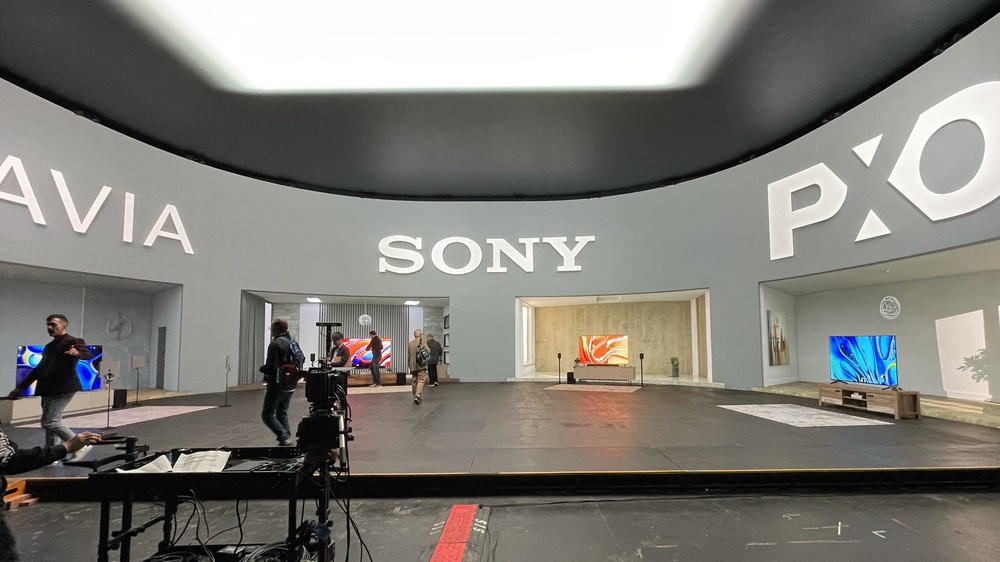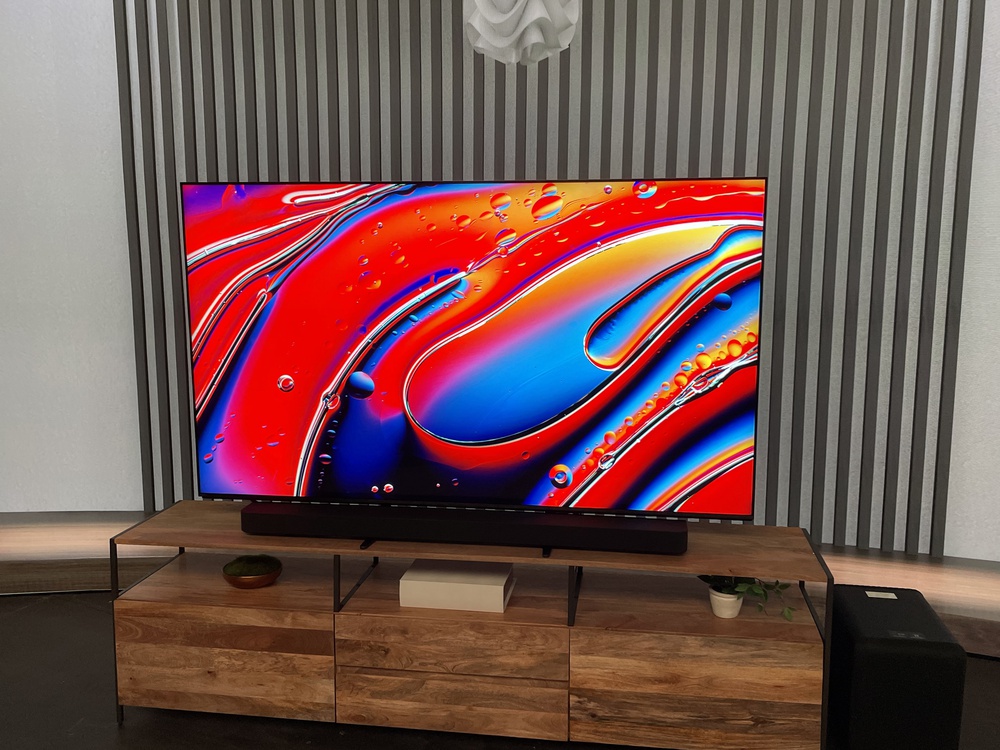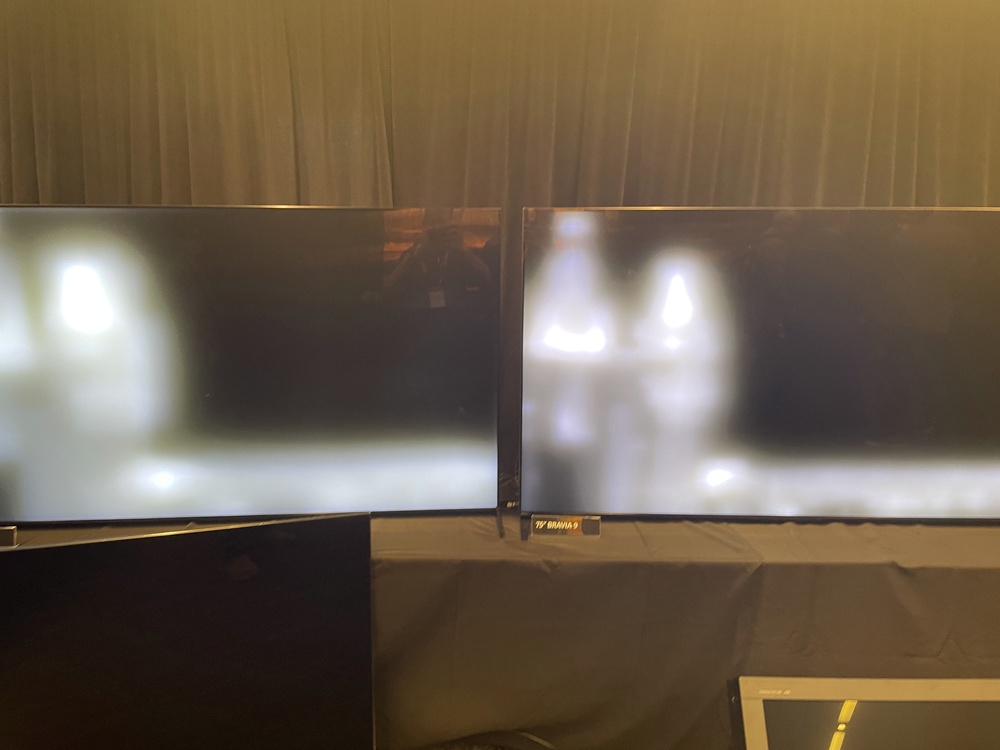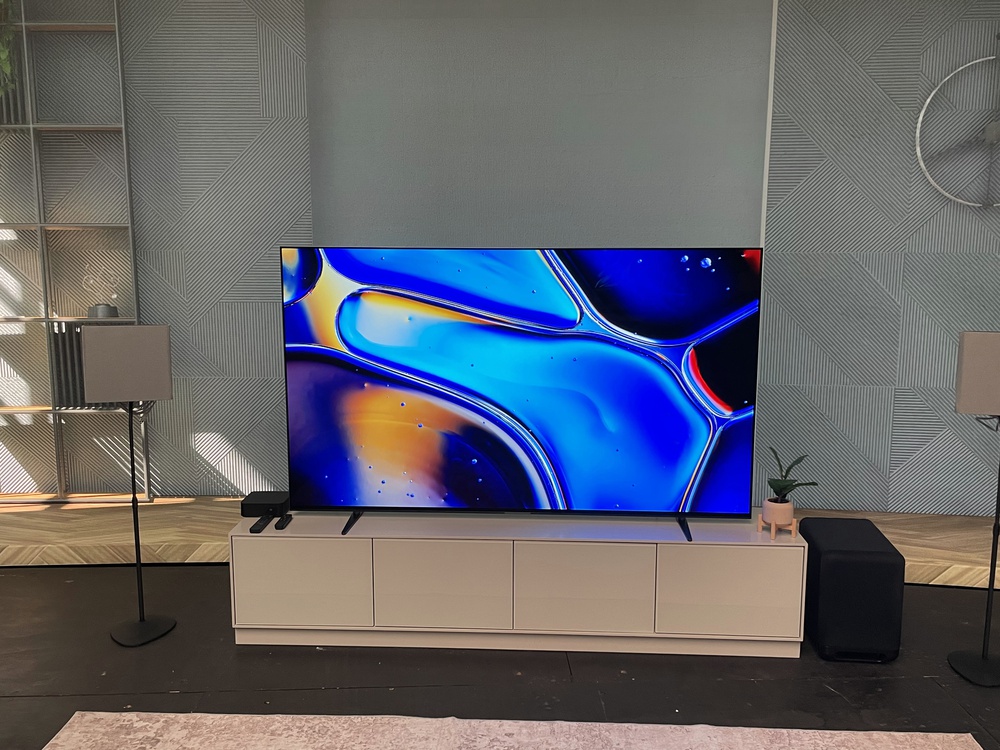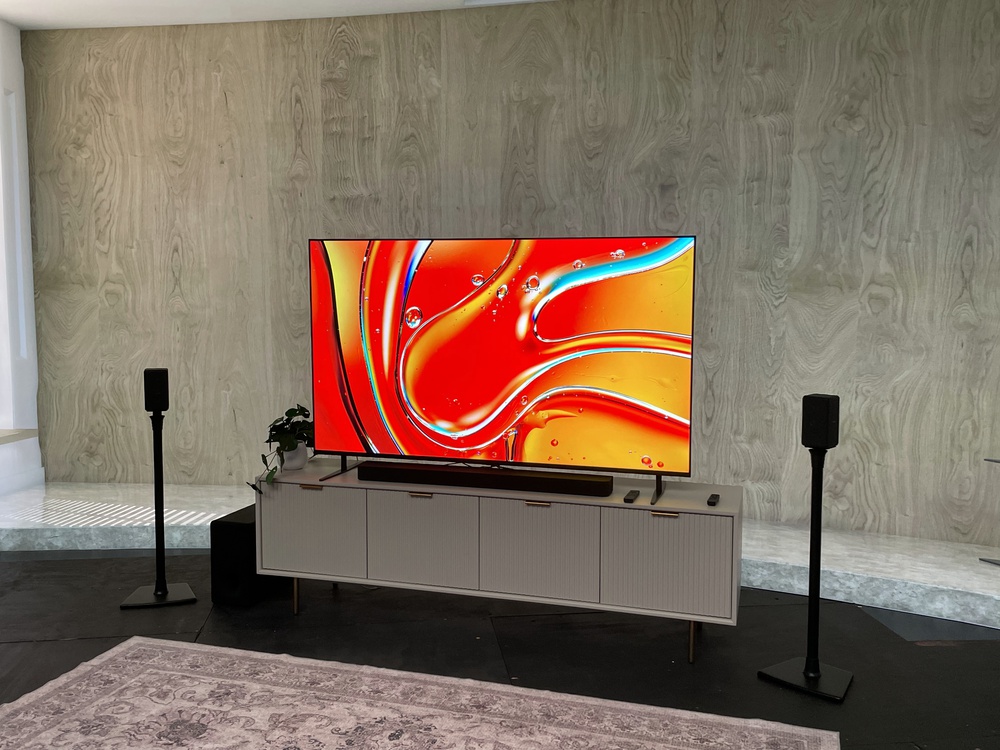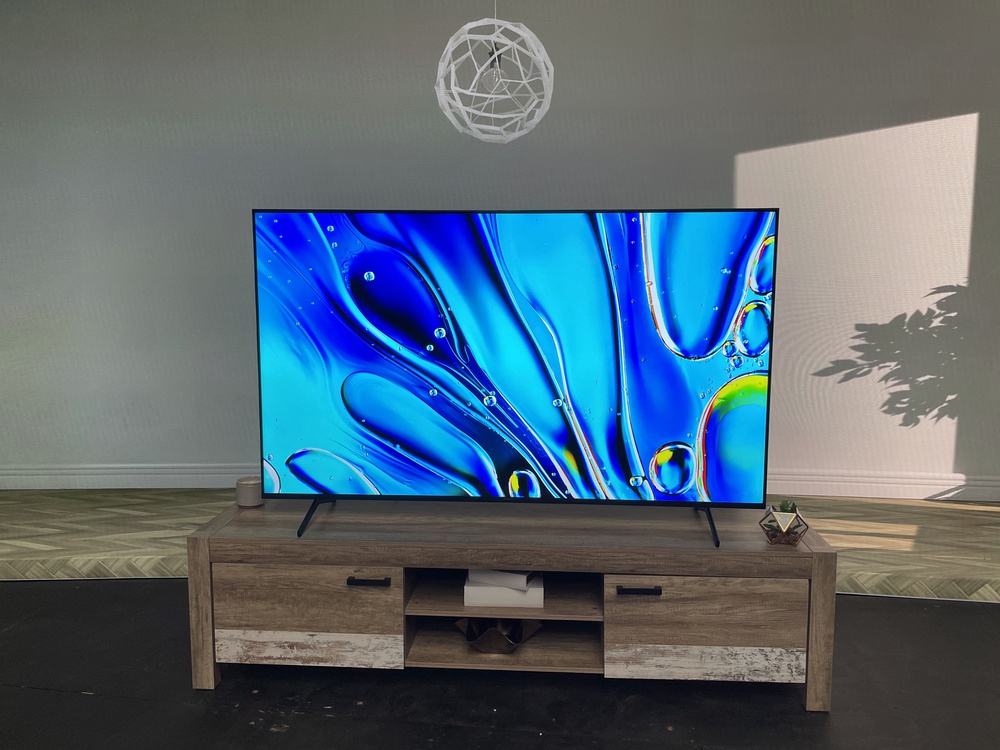After months of speculation and leaks, the Sony 2024 TV lineup is finally here! In March 2024, Sony invited some of the world's biggest tech publications and YouTube channels to an event at the Sony Pictures Studio lot in Culver City, CA. Over two days, Sony's event focused on two main topics: their core marketing message and their 2024 TV and soundbar lineup. We learned a lot over those two days, and now that the embargo on the information has lifted and the announcement is official, we're happy to finally share the Sony 2024 TV lineup with you!
Sony's Marketing
Before we get into the nitty-gritty of Sony's 2024 TV lineup, it's worth taking a moment to talk about Sony's marketing. Sony repeated their main marketing message everywhere at the event: Bring Cinema Home. Although not really a new marketing strategy for Sony, Sony spoke repeatedly about respecting the content creator's intent, and their goal is to deliver the most accurate movie-watching experience for home users, regardless of how they choose to watch their favorite movies.
Sony believes they're uniquely placed to deliver this message, as they're heavily involved in the movie-making process. From the latest motion picture cameras like Sony's VENICE 2 to their advanced post-processing facilities and equipment, including the BVM-HX3110 mastering monitor, Sony's goal is to help directors deliver their vision to any user, whether they're watching it on the latest IMAX cinema screen or a small living room TV. Sony also recognizes that most users aren't watching movies in a light-controlled home theater room, and they're increasingly using features like ambient light sensors to adjust picture settings automatically so the perceived image is as close as possible to the creator's intent.
2024 TV Lineup
So, what can you expect from Sony in 2024? Like previous years, it's not all new models; there are a few carryovers. Sony is changing their naming scheme and putting a bigger focus on the BRAVIA brand. For Sony's TV lineup, the biggest improvements are in their mid- and high-end TVs with Mini LED backlighting. Both the new flagship BRAVIA 9 and the BRAVIA 7 feature significantly improved backlight control, with the BRAVIA 9 integrating the backlight control technology used on Sony's BVM-HX3110 reference monitor.
In typical Sony fashion, they unveiled very few technical details at the event, so we don't have any details on the exact zone counts, peak brightness, or even the HDMI processors used on any of the new TVs.
| Model Name | Product Number | Replaces | Sizes | Backlight Type | Advertised Zones | Resolution | Native Refresh Rate |
|---|---|---|---|---|---|---|---|
| BRAVIA 9 | XR90 | X95L | 65", 75", 85" | Mini LED | Unknown | 4k | 120Hz |
| BRAVIA 8 | XR80 | A80L | 55", 65", 77" | WOLED | N/A | 4k | 120Hz |
| BRAVIA 7 | XR70 | X93L | 55", 65", 75", 85" | Mini LED | Unknown | 4k | 120Hz |
| BRAVIA 3 | S30 | X80L | 43", 50", 55", 65", 75", 85" | LED | No Local Dimming | 4k | 60Hz |
| Carryovers | |||||||
| X90L | X90L | X90K | 55", 65", 75", 85", 98" | Full Array | ~88 | 4k | 120Hz |
| A95L | A95L | A95K | 55", 65", 77" | QD-OLED | N/A | 4k | 120Hz |
| A80L | A80L | A80K | 83" | WOLED | N/A | 4k | 120Hz |
Other than the tech specs above, which are still largely unknown, we learned a bit about the overall design philosophy for Sony's 2024 lineup. All four new models share a similar design language, with very slim bezels on all models down to the entry-level Sony BRAVIA 3. New this year is a four-position stand on the BRAVIA 7, 8, and 9, so you can place the feet in a wide or narrow stance, high or low, to allow for a variety of table sizes and give you the option to set a soundbar in front of the TV without blocking the screen. There's also a new slim wall mount, the Sony SU-WL905, which now supports TVs up to 85" and comes with brackets for a soundbar, so when you swivel your TV out, the soundbar comes with it.
BRAVIA 9
The Sony BRAVIA 9 is the flagship of Sony's 2024 lineup. Whereas Sony's flagship has been an OLED for the last few years, this year's flagship uses a Mini LED backlight to deliver better local dimming performance than previous years. Sony claims to have developed the smallest LED controllers on the market, allowing for finer local dimming control. This, in turn, reduces blooming around small objects, as the TV can dim more tightly around small areas of the screen, and it improves brightness gradation, so you'll see more of a brightness difference in fine details.
As you can see in the sample photo above, finer details in the two towers are far easier to make out, and even along the skyline, there's significantly less blooming into the dark sky above. Sony also showed a few real-world demos with curated content, which looked amazing, with very little blooming and no distracting flickering during zone changes. We saw a few demos with Blu-ray and UHD Blu-ray discs in a less controlled environment, and while the local dimming is fantastic and a significant step up for Sony TVs, it's not perfect. We saw some blooming in darker scenes and around bright highlights, but it's also worth pointing out that this was with pre-production firmware, so the exact performance might change between what we saw and the final retail firmware.
Sony also showed off a brightness demo using a signal generator, showing the TV's ability to display distinct highlights at brightness levels up to 4,000 nits. They showed a four-way demo with some competing models, and other than the reference monitor, the BRAVIA 9 was the only display capable of maintaining gradation with the brightest highlights on screen. Much of this has to do with how the TV tone maps content that exceeds its peak brightness, so we'll see how bright it can actually get.
BRAVIA 8
The Sony BRAVIA 8 is Sony's only new OLED TV announced for 2024. Very few details were announced for this product. It uses a WOLED panel from LG and is available in 55", 65", and 77" sizes, with the 83" Sony A80L carrying over from 2023. We're not sure what differences exist between the older A80L and the BRAVIA 8 or why there's no 83" BRAVIA 8, and Sony wouldn't answer our questions about the panel, so we don't know if it uses MLA to increase peak brightness. There was one side-by-side demo comparing the BRAVIA 8 to the LG C3 OLED, and the differences between them appeared very minor overall.
BRAVIA 7
The Sony BRAVIA 7 replaces the 2023 Sony X93L. Available in 55", 65", 75", and 85" sizes, it uses a similar backlight system to the X90L but with more local dimming zones and better algorithms similar to the Sony BRAVIA 9. Sony showed us a similar side-by-side comparison with the X90L using the special engineering mode that allows us to see what the local dimming is doing. It's clearly an improvement over the X90L but nowhere near as good as the BRAVIA 9, which is expected. Besides that, we don't know much about this TV yet. Sony wouldn't talk about tech specs or brightness, so we'll have to wait to get our hands on it and see how it performs. In person, it looks similar to the X90L, with a similar color gamut and similar reflection handling. There's no wide-angle filter on this model, so the native contrast is expected to be quite a bit better than the BRAVIA 9, but the local dimming is a significant step down.
BRAVIA 3
The Sony BRAVIA 3 is Sony's entry-level 4k TV in 2024. This budget model is only scheduled for release in Canada and the U.S., in a wide selection of sizes ranging from 43" up to an 85" model. As expected for a budget model, it lacks advanced features found on the higher-end models, so there's no local dimming or wide-angle filter. It's built with much of the same design language used in the higher-end models, though the bezels are a bit thicker, and the stand is much simpler.
Prime Video Partnership
Sony also announced a new partnership with Prime Video alongside their new TVs. 2024 Sony TVs feature a new "Prime Video Calibrated" mode, which is designed to deliver a consistent viewing experience that respects the content creator's intent, regardless of your viewing conditions. When you enable this mode and start playing something on Prime, the TV sends a series of parameters back to Prime Video, including the panel type, local dimming information, and some information from the ambient light sensor to determine the viewing conditions. Prime Video, in turn, sends back a list of settings the TV should be using, and the TV automatically adjusts to those parameters, changing things like gamma, brightness, and even motion interpolation depending on the type of content.
Prime differentiates between different types of content as well. For Video-On-Demand content (VOD), it prioritizes creative intent over anything else. For sports, however, it aims to reproduce the experience of seeing sports in person, adjusting certain settings to deliver a more realistic viewing experience. Some motion interpolation is automatically enabled for sports but not for VOD content.
This feature is expected to be available at launch with the 2024 TVs. It doesn't require any work for each specific video, as the setting adjustments are based only on the TV type and ambient light conditions, so it'll be immediately available with all content available on Prime.
Conclusion
After many months of leaks and rumors, Sony has finally unveiled their 2024 TV lineup. Like most recent years, it's a pretty small lineup, with Sony focusing on quality over quantity. There's no doubt that their star TV, the Sony BRAVIA 9, will be one of the best new TVs released in 2024, but with very few technical details, it's hard to say just how well it'll stand up to the competition.
